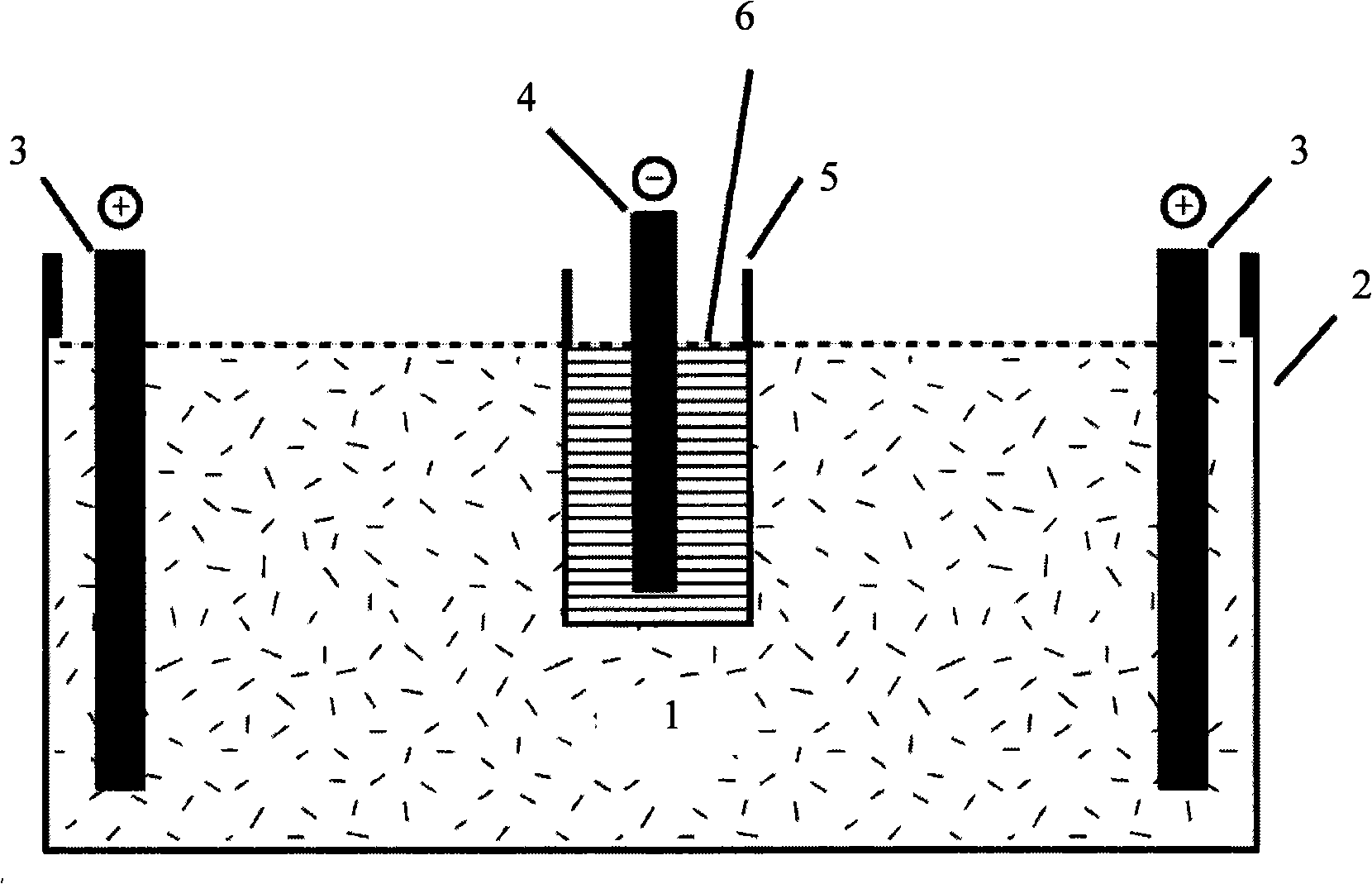Ceramic diaphragm electrolytic cells, preparation method and application thereof
A ceramic diaphragm and electrolytic cell technology, which is applied in ceramic products, applications, electrolysis processes, etc., can solve the problems of inability to produce ceramic diaphragm electrolytic cells by itself, high cost, affecting the use effect and service life of the diaphragm electrolysis method, and achieving low cost. , single aperture, easy to achieve effect
- Summary
- Abstract
- Description
- Claims
- Application Information
AI Technical Summary
Problems solved by technology
Method used
Image
Examples
Embodiment 1
[0023] Mix 60 parts of alumina, 48 parts of silicon oxide, 16 parts of graphite powder and 8 parts of lanthanide rare earths, ball mill them evenly in an aqueous solution, pour them into a mold, and after drying, put them into a kiln for firing at about 1500°C to obtain A ceramic diaphragm electrolyzer with a porosity of 32% and an average pore size of 0.9 μm.
Embodiment 2
[0025] Mix 50 parts of alumina, 30 parts of silicon oxide, 5 parts of rare earth powder and 5 parts of lanthanide rare earth, ball-mill them in an aqueous solution, and then pour them into a mold to form them. After drying, they are fired in a kiln at about 1000°C to obtain A ceramic diaphragm electrolyzer with a porosity of 11% and an average pore size of 0.35 μm.
Embodiment 3
[0027] Mix 75 parts of alumina, 60 parts of silicon oxide, 20 parts of carboxymethyl cellulose and 15 parts of lanthanide rare earth, ball-mill them in an aqueous solution, and then pour them into a mold to form them. After drying, they are fired in a kiln at about 1600°C. Prepared to obtain a ceramic diaphragm electrolyzer with a porosity of 40% and an average pore diameter of 1.5 μm.
PUM
| Property | Measurement | Unit |
|---|---|---|
| Average pore size | aaaaa | aaaaa |
| Average pore size | aaaaa | aaaaa |
| Average pore size | aaaaa | aaaaa |
Abstract
Description
Claims
Application Information
 Login to View More
Login to View More - R&D
- Intellectual Property
- Life Sciences
- Materials
- Tech Scout
- Unparalleled Data Quality
- Higher Quality Content
- 60% Fewer Hallucinations
Browse by: Latest US Patents, China's latest patents, Technical Efficacy Thesaurus, Application Domain, Technology Topic, Popular Technical Reports.
© 2025 PatSnap. All rights reserved.Legal|Privacy policy|Modern Slavery Act Transparency Statement|Sitemap|About US| Contact US: help@patsnap.com

